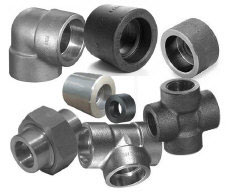stainless butterfly valve
split butterfly valve
butterfly valve lockout

difference between gate and globe valve
Socket welding check valves are employed in a variety of applications, such as commercial construction, fire protection, HVAC, irrigation, mining, water and waste treatment, oil & gas exploration, and power generation.
Socket weld fittings come in a wide range of styles, materials, and sizes to meet any requirement. Options include recessed sockets as well as fillet-style welds around the outer diameter.

globe and gate valve
- Streamlined design
The streamlined design was an aesthetic trend that spread throughout the 1930s and 1940s, featuring clean silhouettes, sculptural casings, and gleaming industrial materials that helped sell new consumer products.
Originating as aerodynamic tests, this forward-thinking imagery soon began to apply to everyday objects, giving them a sleek and contemporary aesthetic. Furthermore, it served to promote industrial design as an emerging profession.
Socket welding check valves are a type of check valve that uses a socket welding connection to join inlet and outlet pipes together. This method works great for systems requiring leakproof integrity under high pressures; however, there are some disadvantages, such as material costs and ongoing upkeep, that make socket welding check valves less suitable for certain applications than other joining methods might be.
- High-pressure rating
A socket welding check valve is a backflow preventer that blocks fluid from returning into a system. It’s commonly used in industrial settings such as pipelines carrying flammable, toxic, or expensive materials.
One major advantage of using a socket welding check valve is its superior capacity to handle high pressures compared to other valve types. Furthermore, it requires minimal setup and upkeep for optimal performance.
Its patented plunger feature utilizes an angled self-aligning disk fully encased in Teflon for optimal seal, making it the first and only valve with a top entry design that allows easy access to inspect the valve without special tools. Furthermore, its slurry-protected compression spring has been independently tested to meet some of the toughest demands, boasting high CV, cracking pressure, and pressure/temperature ratings that rival even those of leading competitors.
- Low operating torque
Socket welding check valves are an ideal choice for general chemical and industrial applications due to their lightweight design, durability, and ease of operation.
They possess low operating torque. This refers to the force needed to seat or unseat a valve in a pressure vessel at its rated temperature and pressure.
Torque is essential in the piping industry as it allows you to control how fluid flows through a valve and can help prevent backflow.
- Easy maintenance
One of the major advantages of using a socket welding check valve is its ease of upkeep. They’re easy to operate and maintain, providing cheap yet long-lasting solutions that get the job done.
Maintenance online is easy – simply remove the threaded cap, inspect the seal, and replace it if necessary. Furthermore, lubricating internal components helps guarantee optimal performance and extend their lifespan.
This makes the socket welding check valve an attractive choice for many industries. They’re cost-effective alternatives to NPT and flanged valves, typically found in smaller pipe sizes.
XINTAI Valve is a renowned valve manufacturer and one of the biggest producers of industrial valve products. We offer six ranges and thousands of varieties, such as control valves, cryogenic valves, gate valves, globe valves, ball valves, check valves, butterfly valves, power station valves, oxygen hydraulic control valves, and thread valve antibiotic valves.